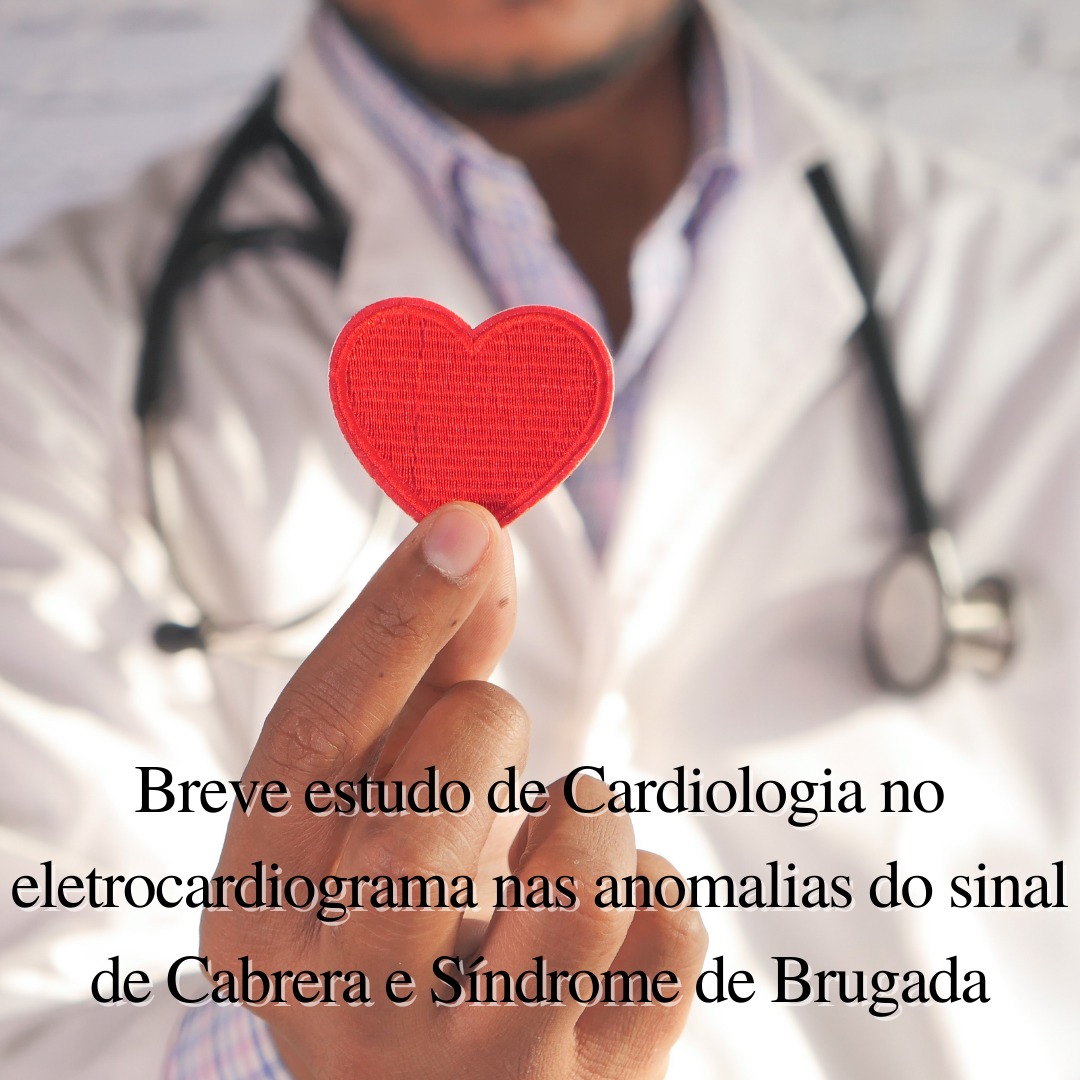Brief study of Cardiology on the electrocardiogram in anomalies of the Cabrera signal and Brugada syndrome
Abstract
This work aims to study the electrocardiogram tracing and show the electrocardiographic signs, the Cabrera signal to Brugada Syndrome and the infarction event from the beginning of the electrocardiogram (ECG) trace when the schematic perception of one of the various arteries starts coronary arteries that can lead to certain wall parts with heart necrosis being this heart muscle necourized by current knowledge not the most intervention therapy that can be done to revert this picture in short and an irreversible picture. In the case of Brugada syndrome is a directed studyprophylaxis so that individuals who intend to participate in fixed activities that require a lot of effort from the heart activities that overload the heart and of utmost importance perform stress testing on a treadmill with great care and care so that you can follow the evolution of the plotted as the heart tends to increase your cardiac debt In order to increase the frequency of beats, the appropriate and prophylactic evaluation will prevent people who tend to have an inadequate T-wave rampage that this improper elevation known as Brugada syndrome that will lead to fibrillation can be warned and treated in the case of the Cabrera sign. and something very important to be able to see and understand in the electrocardiogram tracing because it appears in the tracing indicates that at some point there was a heart attack in a certain part of the heart, further investigation is needed to verify in which the topographic anatomical position of the heart came to be compromised and necrotic losing its previous capacity I will also mention some other abnormalities in the electrocardiogram tracing but with less emphasis than these previously mentioned traces.
References
BARRET PA, Peter CT, Swan HJ, Singh BN, Mandel WJ. The frequency and prognostic significance of eletrocardiographic abnomalites in clinically normal individuals. Prog Cardiovasc Dis. 1981;23(4):299-319.
BRASIL, VARELLA, Drauzio. Ataque cardíaco (infarto). Biblioteca Virtual em Saude. MInisterio da Saude, 2018. Disponivel em: https://bvsms.saude.gov.br/dicas-em-saude/2779-ataque-cardiaco-infarto. Acesso em: 03/02/2021
BRUGADA P, Brugada J. Right bundle block, persistente ST segmet elevation and sudden cardiac death: a distinct clinical and electrocardiographic syndrome. A multicenter report: J Am Coll Cardiol 1992; 20:1391-396
BRUGADA P, Brugada R. Mont L, Rivero M, Geelen P, Brugada J, Natural history of Brugada syndromr: the prognostic value of programmed electrical stimulation of the heart. J Cardiovasc Electrophysiol. 2003, 14(5):455-7
GUYTON, A.C.; HALL, J.E. Tratado de Fisiologia Médica. 12. ed. Rio de Janeiro:
Elsevier, 2011.
Hospital Nove de Julho. Parada Cardiorespiratória. Adaptado de Destaques das Atualizações das Diretrizes da AHA 20019 para RCP / AHA – 2020. Disponivel em: https://www.h9j.com.br/SiteAssets/Paginas/treinamento-parada-cardiorespiratoria/pcr_medico.pdf Acesso em: 22/01/2021
Maron BJ, Savage DD, Wolfson JK, et al. Prognostic significance of 24 hour ambulatory eletrocardiographic monitoring in patients with hypertroficc cardiomyopathy: a prospective study. Am J Cardiol 1981;48.252-257.
NERY, Flávia Roberta e ROSCANI, Meliza Goi Roscani. Revisão sobre infarto agudo do miocárdio recorrente. Universidade Federal de São Carlos, São Carlos/SP, 2019. Disponivel em:https://portalatlanticaeditora.com.br/index.php/enfermagembrasil/article/view/2216/html. Acesso em: 28/01/2021.
PIEGAS LS, at al. V Diretriz da Sociedade Brasileira de Cardiologia sobre Tratamento
do Infarto Agudo do Miocárdio com Supradesnível do Segmento. Arquivos Brasileiros de Cardiologia, 2015. Disponivel em: HTTP://publicacoes.cardiol.br/2014/diretrizes/2015/02_TRATAMENTO%20DO%20IAM%20COM%20SUPRADESNIVEL%20DO%20SEGMENTO%20ST.pdf Acesso em: 01/02/2021
PHILIPS. Desfibrilador HeartStart FR2+. Instrução de Uso. Disponivel em: http://incenter.medical.philips.com/doclib/enc/fetch/577817/577818/FR2+_Instructions_for_Use_(IFU)_M3860A___M3861A_(POR)_ed.12.pdf%3fnodeid%3d578702%26vernum%3d-2 Acesso em: 24/01/2021
Probst V, Veltmann C, Eckardt L, Meregalli PG, Gaita F, Tan HL, et al. Long-term prognosis of patients diagnosed with Brugada syndrome: results from the FINGER Brugada Syndrome Registry. Circulation. 2010; 121(5):635-43.
SAMU. Protocolo de Suporte Basico de Vida, 2016. Disponivel em: https://portalarquivos.saude.gov.br/images/pdf/2016/outubro/26/livro-avancado-2016.pdf Acesso em: 20/01/2021
Revista Espanhola de Cardiologia. Bloqueo interauricular en el síndrome de Brugada. DOI: 10.1016/j.recesp.2016.12.015. Disponivel em: https://www.revespcardiol.org/es-bloqueo-interauricular-el-sindrome-brugada-articulo-S0300893216307394 Acesso em: 27/01/2021
Wilde AA, Antzelevitch C, Borggrefe M, Brugada J, Brugada R, Brugada P, et al. Proposed diagnostic criteria for the Brugada syndrome: consensus report. Circulation 2002; 106: 2514-519

Downloads
Published
How to Cite
Issue
Section
License
Copyright (c) 2021 Valdecir de Godoy Borges

This work is licensed under a Creative Commons Attribution 4.0 International License.
Você tem o direito de:
Compartilhar — copiar e redistribuir o material em qualquer suporte ou formato
Adaptar — remixar, transformar, e criar a partir do material para qualquer fim, mesmo que comercial. Esta licença é aceitável para Trabalhos Culturais Livres.
O licenciante não pode revogar estes direitos desde que você respeite os termos da licença.


